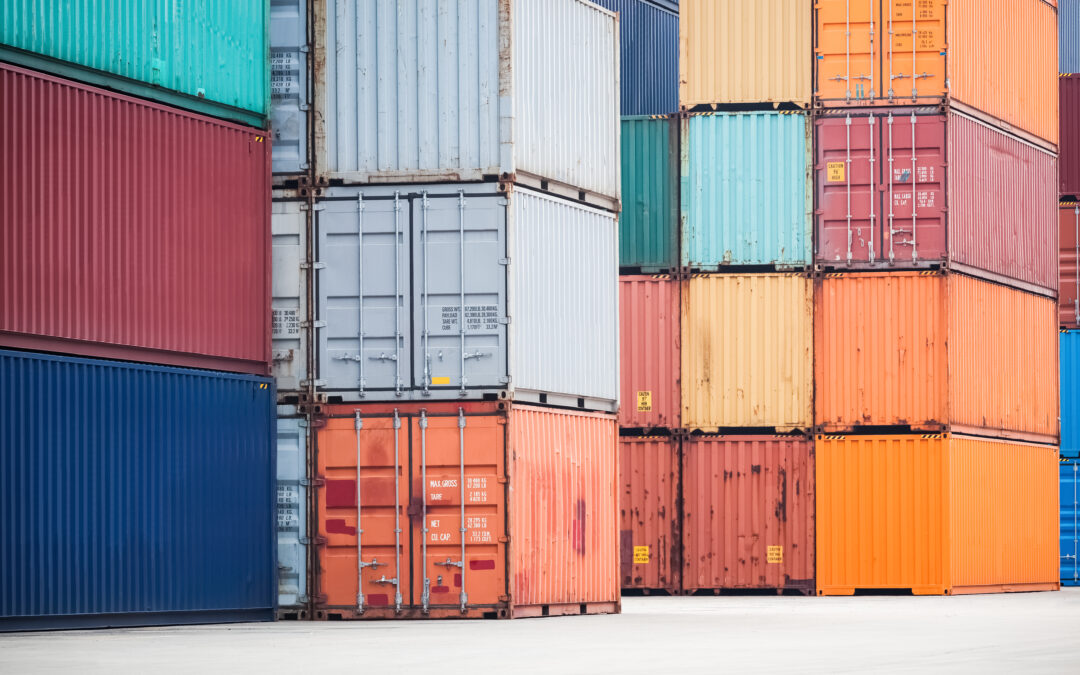In the ever-evolving world of global logistics, managing container storage efficiently is essential for maintaining a seamless supply chain. Ports and terminals, are traditionally the focal points for container movement, are increasingly under pressure due to congestion, limited capacity, and escalating customer demands. As a solution, landside container storage services have emerged as a critical component, providing secure, accessible, and flexible storage options away from port-side bottlenecks.
In this blog, we take a look into the role of landside container storage services, their strategic benefits, and why they are indispensable for modern supply chains.
Understanding Landside Container Storage Services
Landside container storage refers to the secure off-dock storage of shipping containers at facilities located near major transport corridors, such as highways or rail links. These facilities cater to a range of logistics needs, offering short and long-term storage, container handling, maintenance, and repair services.
Designed as an overflow solution, landside storage is a lifeline for businesses facing limited port capacity or striving to avoid costly demurrage fees incurred by exceeding port storage time limits.
Why Landside Storage is Critical
The global surge in trade has overwhelmed port infrastructure, causing delays, increased costs, and logistical challenges for businesses. Landside container storage eliminates these pressures, offering additional storage capacity and enhanced control over container movements. By moving storage away from congested ports, businesses gain the flexibility to store and retrieve containers on their own terms, reducing dependency on port schedules.
Key Benefits of Landside Container Storage Services
Cost Efficiency
Landside storage helps businesses sidestep demurrage and detention fees that quickly add up when containers overstay their allotted time at ports. Beyond financial savings, landside facilities also contribute to sustainability by reducing unnecessary transport distances and associated carbon emissions.
Reduced Port Congestion and Fees
With ports often operating at capacity, off-dock storage eases congestion by creating additional space. This prevents bottlenecks, minimises delays, and eliminates the risks associated with relying solely on overcrowded port facilities.
Enhanced Flexibility
Unlike port-based storage with rigid operational constraints, landside storage facilities offer customisable solutions. Containers can be stored for varying durations, whether temporarily while awaiting delivery or for longer periods to accommodate seasonal demand. Many facilities also provide services like container repositioning and inventory management, enabling businesses to tailor solutions to their specific needs.
Improved Accessibility
Landside storage facilities often operate with extended or 24/7 access, unlike ports with restricted hours. This flexibility ensures faster, more efficient container retrieval and delivery, aligning with tight supply chain schedules. Additionally, their proximity to major transportation routes facilitates swift transit to final destinations.
Advanced Security
With state-of-the-art surveillance systems, access controls, and secure perimeters, landside facilities are designed to protect high-value or sensitive cargo. This level of security is a critical advantage, ensuring businesses can store goods with confidence.
Integrating Landside Storage into Modern Supply Chains
Landside container storage is a strategic asset in overcoming logistics challenges. These facilities extend storage capacity beyond port boundaries, providing businesses with greater autonomy in container management and transport planning. By reducing dependency on shipping lines and terminal operators, landside storage ensures that container flow remains uninterrupted, even during peak congestion or market volatility.
The flexibility of landside solutions also allows businesses to respond dynamically to changing conditions, whether adjusting to fluctuating demand, managing seasonal inventory, or adapting to unexpected disruptions.
Choosing the Right Landside Storage Partner
Selecting an appropriate landside container storage provider is pivotal for maximising supply chain efficiency. Consider the following factors:
Strategic Location: Choose facilities located near key transport hubs or your primary distribution routes to minimise transit times and costs.
Capacity and Scalability: Ensure the facility can accommodate both your immediate and future storage needs, offering scalable solutions as your business evolves.
Comprehensive Services: Look for providers offering container handling, maintenance, and repair to streamline operations and reduce reliance on multiple vendors.
Security Infrastructure: Advanced security measures, including surveillance and controlled access, are essential for safeguarding your goods.
Industry Reputation: Partner with experienced providers known for their reliability and expertise in landside container storage and logistics management.
A Competitive Edge for Global Logistics
In a competitive landscape defined by high stakes and tight deadlines, landside container storage services offer businesses a vital tool for achieving operational excellence. These facilities bridge the gap between port operations and final destinations, ensuring seamless container flow while mitigating risks associated with port congestion and fluctuating demand.
By integrating landside storage into their logistics strategies, businesses can improve supply chain resilience, minimise costs, and maintain a competitive edge. This approach not only addresses current challenges but also positions companies to adapt to future industry shifts.
Conclusion
Landside container storage services are no longer an auxiliary option, they are an essential element of modern logistics. Offering flexibility, cost savings, and enhanced security, these solutions empower businesses to optimise operations and navigate the complexities of global trade. As the logistics industry continues to evolve, leveraging landside storage will be critical for maintaining efficiency, meeting customer expectations, and sustaining competitiveness in a fast-changing market.

